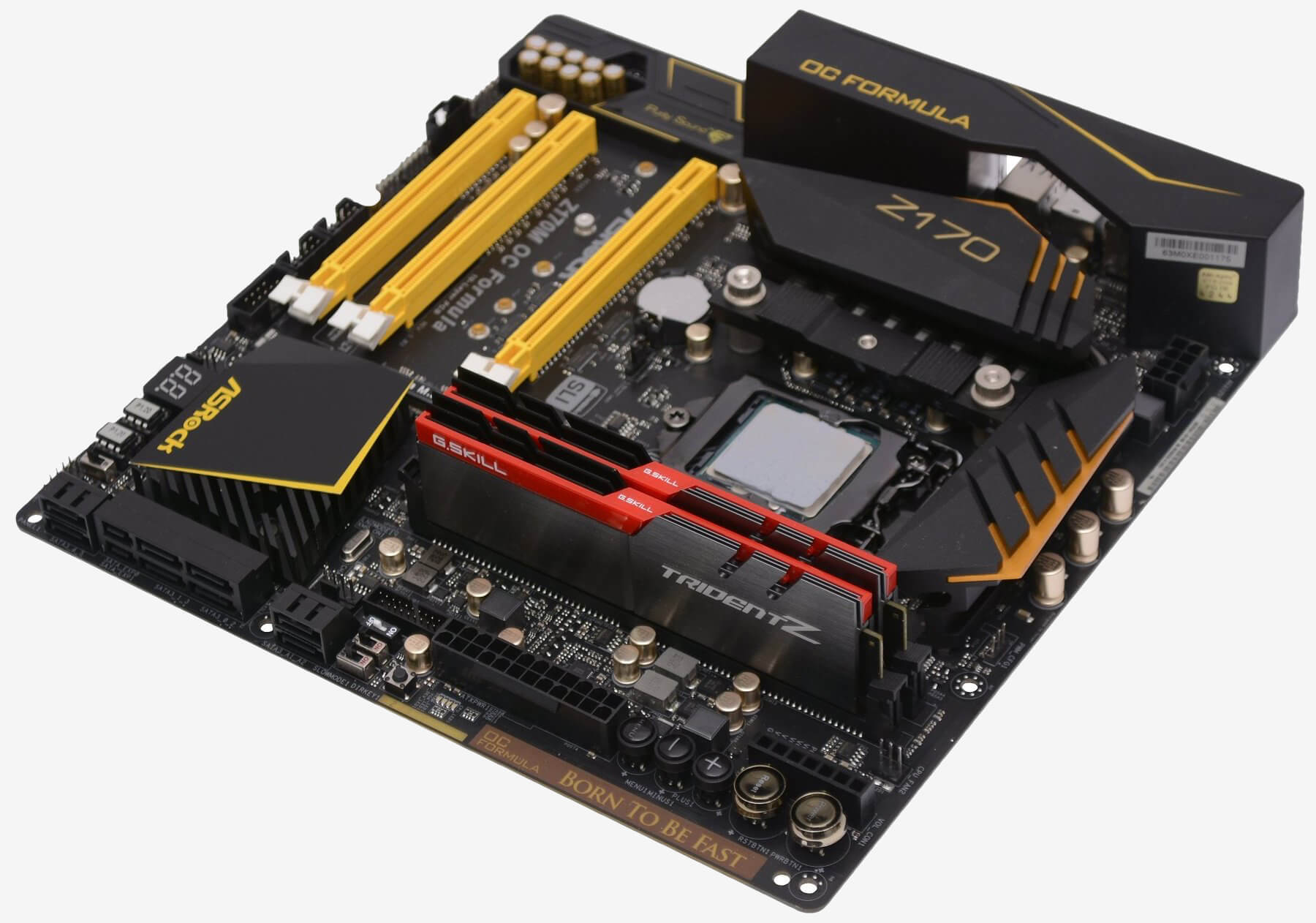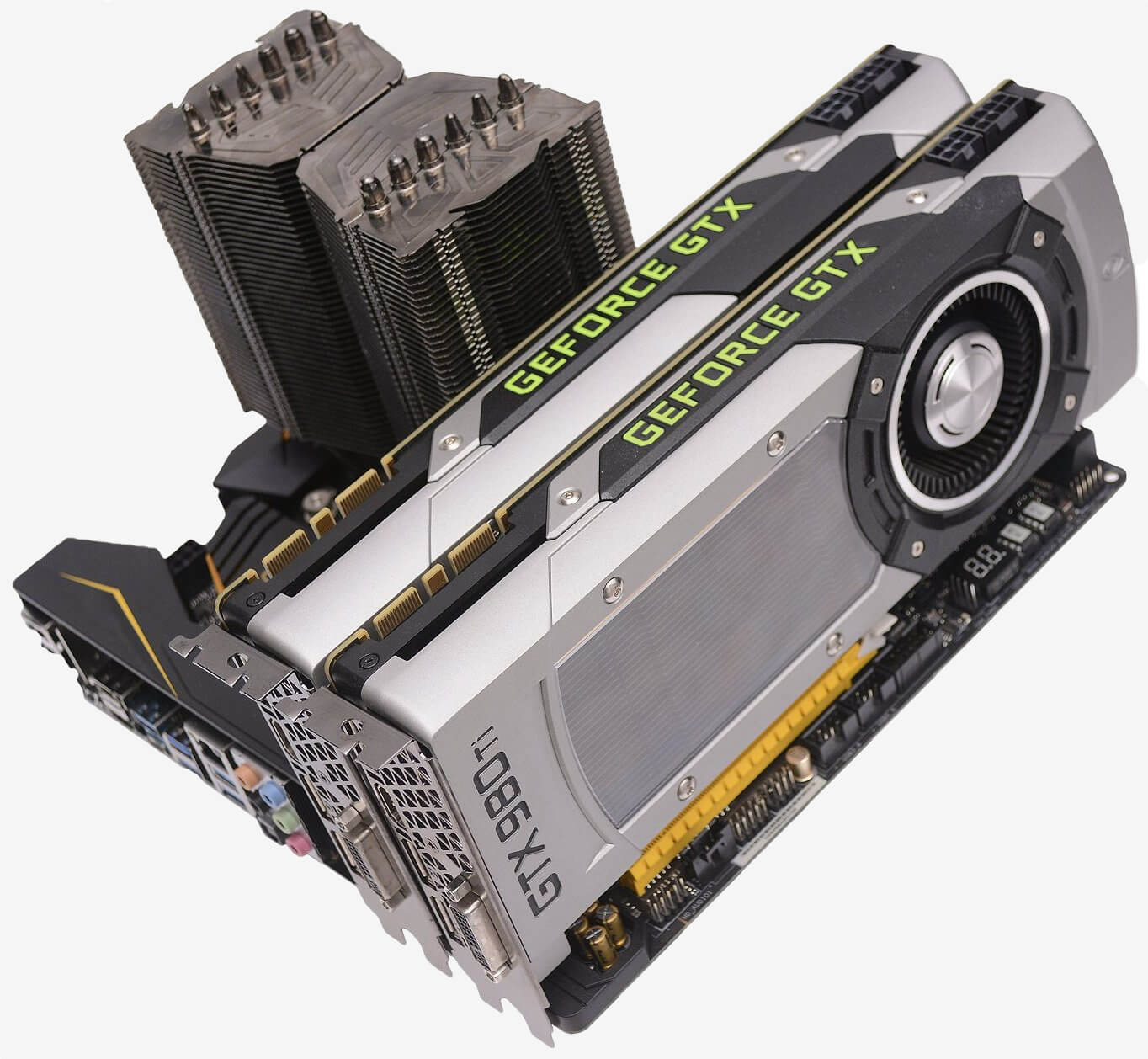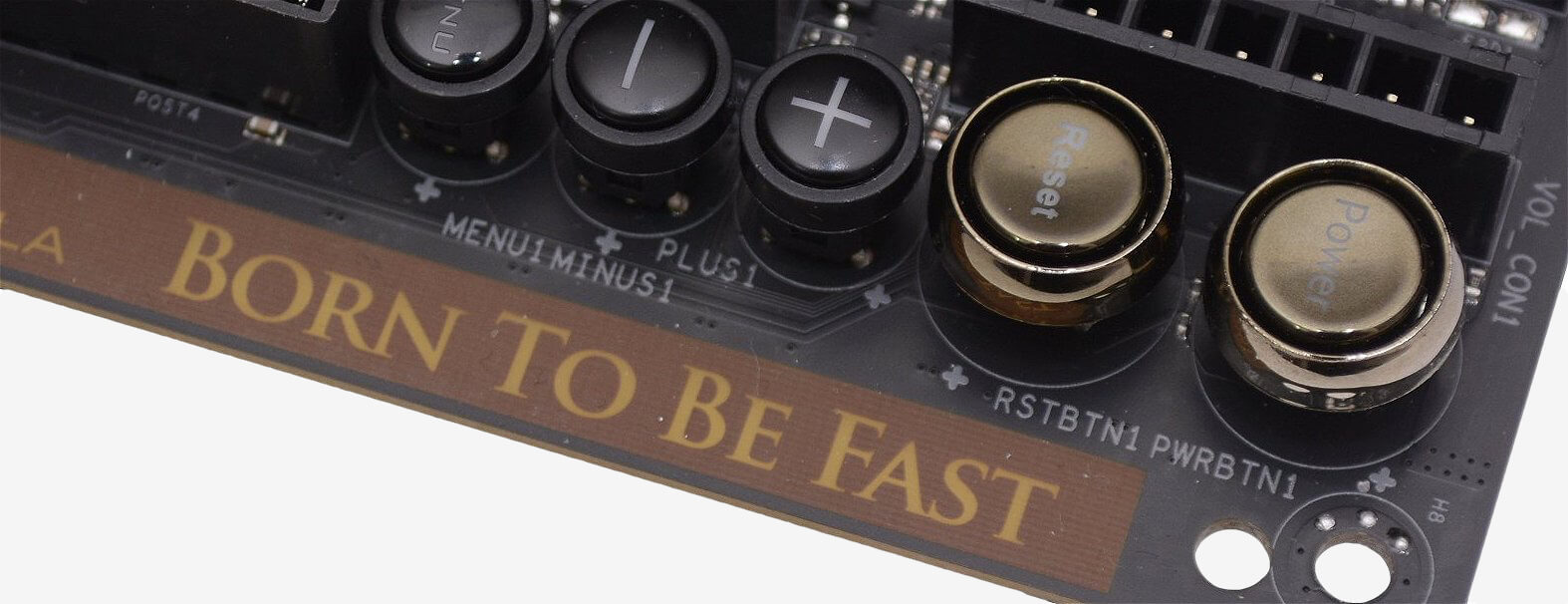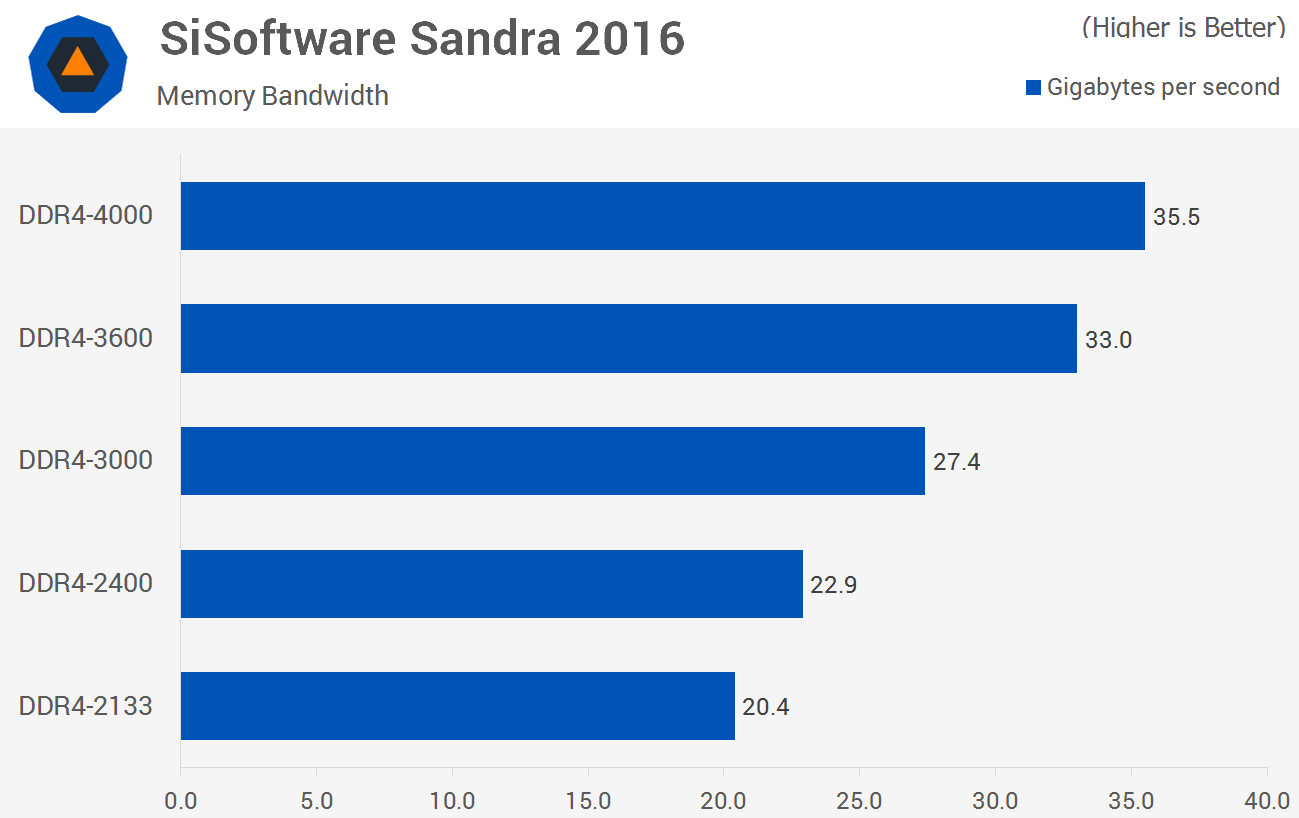Normally I don't pay much attention to e-mails that hit my inbox from manufacturers claiming that a certain motherboard can Saigon Sunsetoverclock a Skylake Core i7 processor the highest, or that they have claimed the 3DMark record. They are in my mind boring marketing tactics that mean little to nothing to the consumer.
Last month I received one such e-mail from Asrock that nonetheless caught my attention. It claimed their Z170M OC Formula was the only motherboard to support G.Skill's Trident Z DDR4-4333 modules. Initially I thought, how useful is that? Are there even any benefits from running DDR4 memory on the LGA1151 platform that high?
For the most part we test using DDR4-3000, as it occasionally shows some benefits over the more typical 2400 and 2666 speeds. Going to 4000 MT/s (2000MHz) and beyond is a massive increase in frequency (and cost) and I struggled to imagine where this would be useful, particularly when gaming. Then again, curiosity had gotten the better of me...

So I asked Asrock to kindly send along one of their Z170M OC Formula motherboards. Disappointingly, G.Skill didn't have any DDR4-4333 memory available and a month later we are yet to see any go on sale, so this news report is appearing more and more like a marketing exercise.
However, G.Skill did come back and say they could provide an 8GB kit of their DDR4-4000 memory which is available for purchase. It isn't the record setting DDR4-4333 memory, but at 4000 MT/s it doesn't fall far short and will certainly give us a clear indication of whether or not this kind of high frequency memory holds any merit.

Currently there are a few DDR4-4000 memory kits available from the likes of G.Skill, Corsair and GeIL. Of those G.Skill's TridentZ modules appear to be capable of the best timings at 19-21-21-41 vs. 19-23-23-45 from Corsair, while the GeIL kits are even slacker at 19-25-25-45.
For testing we'll be using a few select applications and games comparing the Core i7-6700K at various memory speeds ranging from 2133 MT/s up to 4000 MT/s. Helping to maximize gaming performance will be a pair of GeForce GTX 980 Ti graphics cards, if they aren't able to exploit the potential of DDR4-4000 we fear nothing will be able to. With that said, let's get down to business.

|

Starting at DDR4-2133 we see a throughput of just 20.4GB/s which isn't bad but less than what we were seeing from the Haswell processors out of the box. Increasing the memory frequency to 2400 MT/s boosted the memory bandwidth by 12% to 22.9GB/s which is typically what we were first seeing from the Haswell processors.
Going from 2400 MT/s to 3000 MT/s , the speed which we regularly test at, boosted the memory bandwidth by another 20% to 27.4GB/s. Surprisingly taking the next step to 3600 MT/s boosted performance significantly yet again, this time by another 20% as we hit 33GB/s. Final stop at DDR4-4000 saw the memory bandwidth reach 35.5GB/s making it 8% faster than the 3600 MT/s configuration. While theoretical, the first benchmark shows some promise, shall we go real-world?
(Editor: {typename type="name"/})
 NYT mini crossword answers for May 9, 2025
NYT mini crossword answers for May 9, 2025
 Starlink already has 10,000 users, according to a SpaceX FCC filing
Starlink already has 10,000 users, according to a SpaceX FCC filing
 Celtic vs. Rangers 2024 livestream: Watch Scottish Cup Final for free
Celtic vs. Rangers 2024 livestream: Watch Scottish Cup Final for free
 Elon Musk's SpaceX opens pre
Elon Musk's SpaceX opens pre
 Sony launches new flagship XM6 headphones: Order them now
Sony launches new flagship XM6 headphones: Order them now
Best robot vacuum deal: Eufy Omni C20 robot vacuum and mop $300 off at Amazon
 SAVE $300: As of April 16, get the Eufy Omni C20 robot vacuum and mop for $399.99, down from its usu
...[Details]
SAVE $300: As of April 16, get the Eufy Omni C20 robot vacuum and mop for $399.99, down from its usu
...[Details]
Wordle today: The answer and hints for May 24
 Can't get enough of Wordle? Try Mashable's free version now O
...[Details]
Can't get enough of Wordle? Try Mashable's free version now O
...[Details]
Plane turbulence is getting worse. Scientists explain why.
 The skies can be clear, blue, and tranquil. "And all of a sudden, boom, you hit it," Dan Bubb, a for
...[Details]
The skies can be clear, blue, and tranquil. "And all of a sudden, boom, you hit it," Dan Bubb, a for
...[Details]
Canva unveils fleet of tools for large organizations
 Canva is building on its creative toolkit with a redesigned platform tailored to businesses. The com
...[Details]
Canva is building on its creative toolkit with a redesigned platform tailored to businesses. The com
...[Details]
Boeing's new VR simulator immerses astronauts in space training
 Boeing’s Starliner craft is headed to space, but first its astronauts are training in virtual
...[Details]
Boeing’s Starliner craft is headed to space, but first its astronauts are training in virtual
...[Details]
'Atlas' ending explainer: What is Netflix saying about AI now?
 Artificial intelligence is everywhere these days, and Netflix's new sci-fi epic Atlasknows it. Direc
...[Details]
Artificial intelligence is everywhere these days, and Netflix's new sci-fi epic Atlasknows it. Direc
...[Details]
Eubanks vs. Sinner 2024 livestream: Watch French Open for free
 TL;DR:Live stream Christopher Eubanks vs. Jannik Sinner in the 2024 French Open for free on 9Now, Fr
...[Details]
TL;DR:Live stream Christopher Eubanks vs. Jannik Sinner in the 2024 French Open for free on 9Now, Fr
...[Details]
 For the first time, SpaceX will launch a mission with a crew of civilians — and you can enter
...[Details]
For the first time, SpaceX will launch a mission with a crew of civilians — and you can enter
...[Details]
Apple is actively looking at AI search for Safari
 The U.S. Justice Department is suing Google (or Alphabet Inc., if you prefer), and in testimony toda
...[Details]
The U.S. Justice Department is suing Google (or Alphabet Inc., if you prefer), and in testimony toda
...[Details]
 Using artificial intelligence to “resurrect” dead loved ones has become a business acces
...[Details]
Using artificial intelligence to “resurrect” dead loved ones has become a business acces
...[Details]
接受PR>=1、BR>=1,流量相当,内容相关类链接。